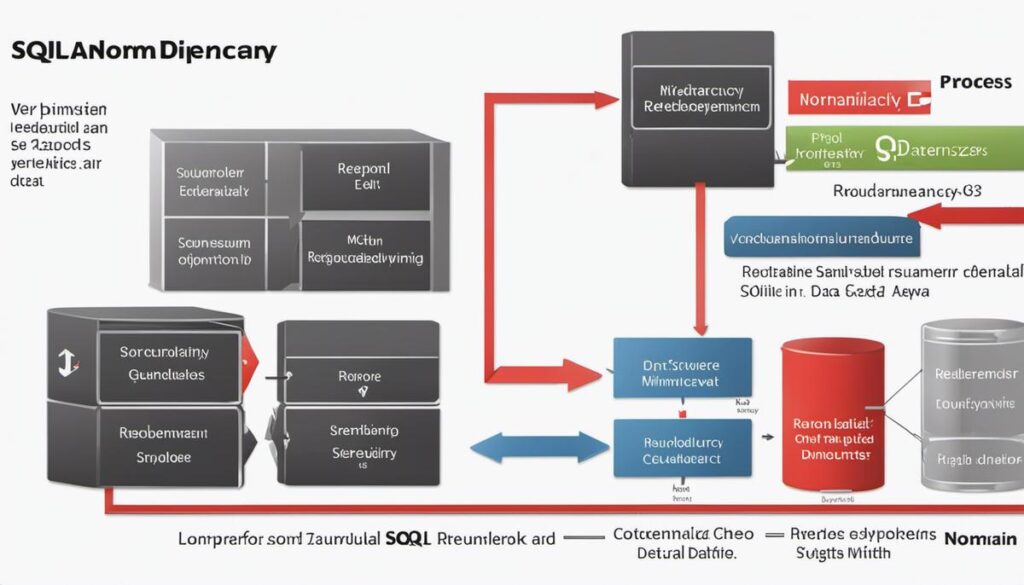In a digital world where data is the new oil, gaining a comprehensive understanding of best practices for SQL Server can be a game-changer. As a widely used relational database management system, SQL Server plays an integral role in handling, storing, and retrieving data effectively. This discussion aims to unpack the foundations of SQL Server, particularly focusing on normalization, optimization techniques, and security best practices. Each of these areas is crucial for maintaining integrity, boosting performance, and safeguarding crucial data.
Understanding Normalization in SQL Server
Delving Into the Intricacies of SQL Server Normalization: The What and Why
In the universe of database management and network infrastructure, SQL Server normalization holds immense significance. Perhaps you might be pondering, “What exactly is SQL Server normalization, and why is it of such paramount importance?” Let’s dive straight into it!
A robust foundation of structured data rests on the pillars of Schema, Normal Forms, and Indices – the primary components of SQL Server Database Normalization. It’s a systematic approach that simplifies the organization and leverage of data.
At its core, SQL Server normalization deals with aligning data to reduce redundancy while promoting data integrity. The intent? Minimizing data anomalies that can potentially lead to inconsistent or faulty results. It’s all about maintaining balance: too much normalization can result in complex queries (think a subsequent reduction in data retrieval speed!).
SQL Server normalization is categorically divided into several normal forms. Each form is a provenance of rules observing specific conditions to smoothen your database design.
- First Normal Form (1NF): This form eradicates duplicative columns from the same table and creates separate tables for each group of related data.
- Second Normal Form (2NF): In this form, the table must be in 1NF, and the columns that are not dependent upon the primary key should be moved to a different table.
- Third Normal Form (3NF): To satisfy 3NF rules, the table should be in 2NF and there should be no transitive functional dependency.
Understanding these forms is essential, each of them identifying a specific level of detail or complexity.
But why is SQL Server normalization so crucial? There’s more to SQL normalization than simply reducing data redundancy and enhancing data integrity. Rigorously considered, it can:
- Streamline data usage since unnecessary data duplication is avoided.
- Promote effective storage by better-organizing data.
- Increase performance by reducing the I/O response time.
- Strengthen security measures by using granular levels of access to certain data.
Indeed, SQL Server Normalization might seem like an intricate science to those who are uninitiated, but its significance in the realm of data management cannot be understated. It’s a skill set that needs to be embraced by the community pursuing innovation in the expanding territory of data science.
In this ever-evolving tech landscape, harnessing the power of SQL Server normalization not only warrants better data management but also lays the groundwork for efficient problem-solving. After all, isn’t that what we technophiles strive for?

Optimization Techniques for SQL Server
Elevating SQL Server Performance Through Advanced Optimization Techniques
Delving into the next phase of SQL Server performance enhancement, we step aside from normalization to explore advanced techniques for optimization. Technology enthusiasts revel in the pursuit of efficiency and quality; waiting for a slow-running SQL Server isn’t exceptional. This article elaborates on optimization tactics to enhance SQL Server’s performance and assist tech savvies in their journey towards a more optimized SQL Server environment.
- Effective Use of Indexes:
- SQL Server Configuration Settings:
- Optimized T-SQL Queries:
- Regular Database Maintenance:
- Effective Use of SQL Profiler:
In conclusion, focusing on advanced optimization techniques beyond normalization ensures an evident boost in SQL Server’s performance. Innovations in technology are constantly demanding tech enthusiasts to keep up with trends; optimization techniques for SQL serve as a key skill in their tech toolbox. By leveraging these practices, there is no limit to how much one can achieve efficiency and improve performance in SQL Server.

SQL Server Security Best Practices
In the realm of SQL Server, security is of utmost importance. With a gamut of dangerous cyber threats lurking, the adept use of security practices not only safeguards the SQL Server from potential breaches but also ensures the server runs at optimum performance. Let us delve further into some of the best practices that align with these objectives.
Firstly, the Principle of Least Privilege (PoLP) is a critical, must-implement aspect of SQL Server. This principle implies that a user should possess only the bare minimum privileges necessary to perform their tasks. By limiting user access this way, unauthorized access to sensitive objects can be curtailed significantly, promoting a strong security stance.
Secondly, the importance of strong passwords and mandatory alteration of default passwords can’t be understated. A robust password policy is instrumental in thwarting brute force and dictionary attacks. The built-in password policy enforcement mechanisms of SQL Server are beneficial in maintaining password hygiene.
Next, safeguarding the physical access to the SQL Server is as crucial as its logical access. Implementing encryption both at rest and in transit helps to secure data from unauthorized interception. Using Transparent Data Encryption (TDE), which is built-in in SQL Server, can protect the data at rest while securing the transport layer with SSL/TLS protocols decreases the risk of data interception.
Fourthly, SQL Server auditing provides an eagle eye for overall activities happening in the database. By setting up audits, tracking database changes and event logging becomes much easier. Any unauthorized activity or systemic breaches can be promptly identified and tackled.
Backup and restoration policies form the backbone of efficient data management. Regular, scheduled backups, along with tested restoration, can mean the difference between minor speedbumps and catastrophic data loss. Using built-in backup functionality in SQL Server greatly simplifies this process.
Finally, consistent updates and patches for SQL Server chalk out a strong defensive barrier against modern security threats. These updates rectify potential vulnerabilities and add a plethora of enhancements that boost the server’s security value and performance.
Remember, SQL Server itself is a tool, and how it is configured and managed determines its security level. These practices won’t make your server invincible, but they are solid steps toward creating a secure fortress of data protection.
Ultimately, acquiring sharp proficiency in best practices for SQL Server can greatly enhance the performance, security, and reliability of your system. From mastering the complexities of normalization to applying optimization strategies and implementing rigorous security measures, each practice contributes to the successful management of vast amounts of data. Armed with this knowledge, one may effectively navigate the challenges and nuances of managing data in today’s technologically sophisticated world.

